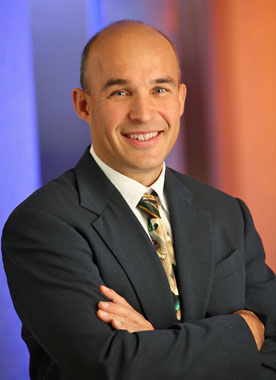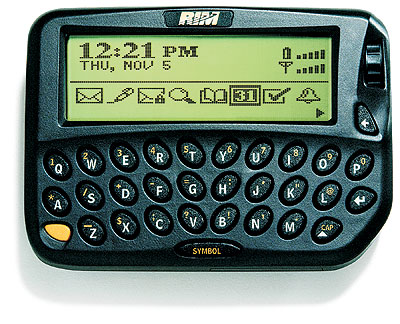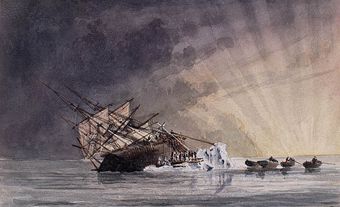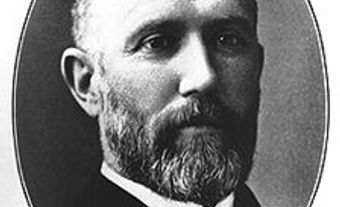James Laurence (Jim) Balsillie, co-CEO of Research In Motion, business executive, chartered professional accountant, philanthropist (born 3 February 1961 in Seaforth, ON). Balsillie is best known as the former chairman and co-CEO of Research In Motion, the Waterloo, Ontario, company now known as BlackBerry. He is also a major philanthropist and the founder of numerous non-profit organizations, including the Arctic Research Foundation (which found one of the lost Franklin ships in 2016), the Perimeter Institute for Theoretical Physics, the Balsillie School of International Affairs and the Centre for International Governance Innovation. An avid hockey fan, Balsillie tried on three separate occasions to purchase a National Hockey League team and move it to Hamilton, Ontario.

Early Life and Education
Jim Balsillie was born in Seaforth, Ontario. His father, Raymond, worked as an electronics technician for Ontario Hydro and his mother, Laurel, raised Jim and his brother and sister. In 1966, the family moved to Peterborough, Ontario, where Jim grew up. Balsillie was enterprising from a young age, selling Christmas cards door to door at age seven. In his teen years, he juggled several newspaper delivery routes and managed a painting operation. As well, he helped out at a Big Brothers of Canada camp, worked at a ski hill and did maintenance at a trailer park.
In 1984, he earned a Bachelor of Commerce degree from Trinity College, University of Toronto.
Early Career
After university, Jim Balsillie became a chartered accountant and joined Clarkson Gordon (now Ernst & Young), an accounting and auditing firm in Toronto. In 1987, Balsillie left Clarkson Gordon to go back to school, studying for his MBA at Harvard University. During his studies, he met Rick Brock, owner of Sutherland-Schultz, a small tech company in Cambridge, Ontario. After Balsillie graduated in 1989, he moved back to Canada and joined Sutherland-Schultz, where he became executive vice-president.
In 1992, another company acquired Sutherland-Schultz, and Balsillie was edged out in the process. During takeover negotiations, Brock suggested that Balsillie use the severance he would receive to invest in a small company, pointing Balsillie to Research In Motion (RIM), one of Sutherland-Schultz’s local suppliers (see Blackberry Limited). (At the time, RIM designed circuit boards for Sutherland-Schultz.)
Research In Motion and BlackBerry

RIM was founded by Mike Lazaridis, an electrical engineer, and Douglas Fregin, in 1984. The company started as a software and computer science consulting firm, but by the late 1980s, RIM was developing a wireless data transmission system that would be used in pagers and wireless payment systems. (RIM was the first in North America to work on such technology, which laid the foundation for the BlackBerry smartphone.)

After learning more about the business, which was then a small operation above a bagel shop, Jim Balsillie believed strongly in its potential. At the time, RIM was in need of cash, partly because its biggest customers were late on payments. In 1992, when he was 31 years old, Balsillie used his severance from Sutherland-Schultz and remortgaged his home in order to invest $125,000 in RIM. His investment amounted to a 33 per cent stake in the business, which he joined as chairman and co-CEO, alongside Lazaridis. Balsillie’s business acumen complemented Lazaridis’s technical expertise and played a significant role in expanding RIM from a very small company. Balsillie was responsible for strategy, business development and finance.

In 1996, RIM introduced the Inter@ctive Pager 900, a two-way pager that was capable of sending fax and email. The following year, RIM became a publically traded company, raising $105 million from investors.
After RIM launched the BlackBerry in 1999, the handheld (eventually the “smartphone”) began its meteoric rise. This was led in part by Balsillie’s marketing efforts. To promote its usefulness Balsillie was known to give the device out for free at tech industry conferences, targeting “early adopters.” He also got the device into the hands of investment bankers on Wall Street and US politicians. Meantime, RIM had signed handheld supply agreements with BellSouth Wireless, IBM, American Mobile and Rogers Cantel.
In 1999, RIM was listed on the NASDAQ, where the company raised more than $250 million. The following year, it raised another $870 million.
Backdating Stock Options
On 5 March 2007, Jim Balsillie stepped down as chairman of RIM, but remained its co-CEO, after RIM received a US$250-million accounting charge for backdating stock option grants to its high-level employees. (Options backdating involves granting stock options, but dating them to an earlier time when the price was lower, resulting in higher profit. The practice was common among tech sector executives, and Apple’s Steve Jobs was also embroiled in a backdating “scandal.”) Balsillie and Mike Lazaridis both paid $5 million for the months-long internal investigation into the option grants. “We are responsible, Mike and I are the CEOs and we don't duck it. We put our money on the table and we stand behind it,” Balsillie told The Globe and Mail. In 2009, RIM agreed to pay a $77-million fine to settle the matter with the Ontario Securities Commission. Balsillie, Lazaridis and RIM’s chief financial officer, Dennis Kavelman, paid most of the fine. They were also charged by the U.S. Securities & Exchange Commission for the same offence and they settled with the agency.
Departure from RIM
By October 2007, RIM was valued at over $67 billion, making it the most valuable company in Canada for a brief period. However, the smartphone market was changing rapidly, especially after Apple launched the iPhone in 2007, a touchscreen device with media player and camera (see Is the iPhone Killing RIM?). RIM continued to grow over the next few years, reaching nearly US$20 billion in sales in 2011. However, the company missed out on many of the industry trends on which its competitors capitalized, adding a camera (2006) and touchscreen (2008) to its phones and creating an online app store (2009) well after most of its competitors.
By the end of 2011, RIM’s market share had collapsed and the company had suffered its fifth major service disruption in as many years. Also, the company’s stock prices fell by nearly 75 per cent that year, causing shareholders to request a change in leadership.
On 22 January 2012, Balsillie and Mike Lazaridis announced that they were stepping down as co-CEOs. They were replaced by RIM’s chief operating officer, Thorsten Heins. Both Balsillie and Lazaridis stayed on as members of the board of directors, but Balsillie resigned on 29 March 2012. In early 2013, he sold his remaining company shares. (See also The Fall of the Blackberry Titans)
Did You Know?
Jim Balsillie and Mike Lazaridis were portrayed in the 2023 comedy-drama BlackBerry. Glenn Howerton played Mike Lazaridis in the film.
Balsillie’s NHL Dreams
In 2006, Jim Balsillie made headlines when he tried to purchase the Pittsburgh Penguins for US$175 million. He withdrew the offer when the National Hockey League (NHL) advised him that the league would restrict his control over the team. Balsillie tried again with his attempt to buy the Nashville Predators for US$238 million in 2007. Negotiations with the owner were stopped by the NHL after it became clear that Balsillie planned to relocate the team to Hamilton, Ontario. In 2009, he tried to bring an NHL team to Hamilton for the third time, when the Phoenix Coyotes filed for Chapter 11 bankruptcy protection. However, Balsillie’s US$242.5-million bid for the team was rejected by an Arizona bankruptcy judge (see The NHL Market in Canada).
Arctic Research Foundation and the Franklin Search
In 2011, Jim Balsillie established and endowed the non-profit Arctic Research Foundation (ARF), which took part in the search for the lost ships of Sir John Franklin’s 1845 Arctic expedition (see Franklin Search). One of the foundation’s research ships, the Martin Bergmann, was part of the flotilla that found the HMS Erebus in early September 2014. Efforts to find the ships had been carried out by Parks Canada, ARF and other partners for years. In 2014, they were joined by the Royal Canadian Geographic Society (RCGS), who came to dominate media coverage of the expedition.
Balsillie was frustrated by the way the discovery of the Franklin ship was represented in a CBC documentary aired on The Nature of Things. He argued that its depiction was an “alternative narrative” that benefited the RCGS, one that was “misleading to the Canadian public.” He shared these concerns in a letter sent to Environment Minister Leona Aglukkaq and copied to the Prime Minister’s Office (PMO).
“Most people were supportive of me in sending the letter, but a couple of civil servants cautioned me that if I pushed too hard, the PMO could ‘destroy me and my friends,’” Balsillie told Buzzfeed in 2015. “The notion that I could be intimidated by boys in shorts for questioning the accuracy of RCGS’s narrative is laughable.”
On 12 September 2016, ARF announced that it had found the HMS Terror in Nunavut’s Terror Bay, north of where the Erebus was found in 2014. The discovery was confirmed by Parks Canada on 26 September 2016.
Philanthropy

In 2000, Jim Balsillie gave a $10-million endowment to the Perimeter Institute for Theoretical Physics, which opened a new facility in 2004. In 2001, he founded the Centre for International Governance Innovation (CIGI) with a $20-million endowment — Mike Lazaridis donated another $10 million. CIGI is a non-profit and non-partisan international affairs think tank based in the former Seagram Museum in Waterloo (see Seagram). The following year, he put together $50 million for the University of Waterloo, Wilfrid Laurier University and CIGI, who together created the Balsillie School of International Affairs. In 2011, Balsillie donated $25 million to the Institute for New Economic Thinking, a non-profit think tank in New York City established by American business magnate George Soros shortly after the financial crisis of 2007–08. In 2021, Writers’ Trust Canada inaugurated the Balsillie Prize for Public Policy. The prize is part of a $3 million donation made by Basillie to the Writers’ Trust.
Balsillie has also made joint donations with his wife, Heidi. They are patrons of the Grand River Hospital, where their $5-million gift helped establish a new cancer care centre in 2003, named The Balsillie Family Building. The couple has also supported the Waterloo Regional Children’s Museum, and the Child Witness Centre in Waterloo.
Personal Life
Balsillie and his wife, Heidi, have two children and live in Waterloo. He is an avid sports fan known to coach his children’s teams and to play “beer league” hockey. At the height of his personal wealth, Balsillie was often described as a billionaire who lived in a modest home and wasn’t one to flaunt his success. After Balsillie slipped from the list of the world’s billionaires in 2011, Luisa Kroll (at Forbes) stated that he would have remained a billionaire were it not for his “notable generosity.”
Honours
Balsillie has received honorary degrees from Wilfrid Laurier University (2003), Dalhousie University (2006), University of Toronto (2007) and Trent University (2007). He was elected a fellow of the Institute of Chartered Accountants of Ontario (2003), an organization that maintains professional and regulatory standards among chartered professional accountants. In 2006, Balsillie was inducted to the American Marketing Association’s Marketing Hall of Legends, and in 2009, Balsillie and Lazaridis were inducted into the Canadian Business Hall of Fame. Balsillie is also an Honorary Captain of the Royal Canadian Navy.
Awards
- Canada’s Outstanding CEO of the Year, Bennett Jones (2006)
- International Business Executive of the Year, Canadian Chamber of Commerce (2006)
- Outstanding Business Leader Award, Wilfrid Laurier University(2008)
- International Distinguished Entrepreneur Award, Associates of the Asper School of Business at the University of Manitoba(2009)
- Chairman’s Award for Outstanding Contribution, GSM Association Global Mobile Awards (2009)

 Share on Facebook
Share on Facebook Share on X
Share on X Share by Email
Share by Email Share on Google Classroom
Share on Google Classroom










